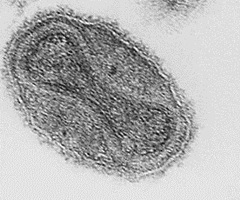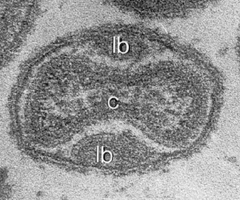
Memory Cells
If your body fights a virus once, the same virus will probably try to attack again. After all the work it took to get rid of that first infection, it would be a shame to have to do it all over again. An amazing feature of your immune system is that it remembers the infections it has fought. This makes it much easier to fight the same virus or bacteria a second, or third, or fourth time.
A Memory cell never forgets

Toward the end of each battle to stop an infection, some T-cells and B-cells turn into Memory T-cells and Memory B-cells. As you would expect from their names, these cells remember the virus or bacteria they just fought. These cells live in the body for a long time, even after all the viruses from the first infection have been destroyed. They stay in the ready-mode to quickly recognize and attack any returning viruses or bacteria.
Quickly making lots of antibodies can stop an infection in its tracks. The first time your body fights a virus, it can take up to 15 days to make enough antibodies to get rid of it. With the help of Memory B-cells, the second time your body sees that virus, it can do the same in thing 5 days. It also makes 100 times more antibodies than it did the first time. The faster your body makes antibodies, the quicker the virus can be destroyed. With the help of Memory B-cells, you might get rid of it before you even feel sick. This is called gaining immunity.

Building Memory Cells without getting sick
If you get an infection, you can build up immunity to that specific virus. Another way to get immunity is to get a vaccine. Vaccines are very weak or dead versions of a virus or bacteria that prepare your Memory Cells to fight that specific virus or bacteria. Since vaccines help you gain immunity without getting sick, they are especially good protection for very dangerous illnesses.
Vaccinations in history
The first successful vaccine was against smallpox in 1796. Smallpox is caused by a very contagious and deadly virus. Back then, smallpox was especially scary because people knew so little about viruses, bacteria, or how the immune system works.
It was Dr. Edward Jenner who noticed that young women who milked cows usually caught cowpox, but rarely caught smallpox. He thought maybe getting cowpox prevented getting smallpox.
 |  |
To test his idea, Dr. Jenner tried infecting people with cowpox on purpose, and then exposed them to smallpox. Amazingly, they didn’t catch smallpox. He didn’t know exactly how it worked, but we now know that cowpox and smallpox have antigens with similar shapes. This means that Memory Cells to fight cowpox can also fight smallpox. Because vacca means cow in Latin, Dr. Jenner called this type of disease prevention vaccination.

After Dr. Jenner’s discovery, it became common to vaccinate everyone against smallpox. It has been so successful that since 1979 there have been no smallpox infections.
Today, we have many vaccines to protect us from getting sick. Most of these are shots, but some scientists are working on vaccines made in plants that you can eat. This might mean one day you won’t get a vaccine shot, you’ll just enjoy a vaccine smoothie!
Bibliographic details:
- Article: Memory B-Cell
- Author(s): Dr. Biology
- Publisher: Arizona State University School of Life Sciences Ask A Biologist
- Site name: ASU - Ask A Biologist
- Date published: 4 Aug, 2011
- Date accessed:
- Link: https://askabiologist.asu.edu/memory-b-cell
APA Style
Dr. Biology. (Thu, 08/04/2011 - 11:16). Memory B-Cell. ASU - Ask A Biologist. Retrieved from https://askabiologist.asu.edu/memory-b-cell
Chicago Manual of Style
Dr. Biology. "Memory B-Cell". ASU - Ask A Biologist. 04 Aug 2011. https://askabiologist.asu.edu/memory-b-cell
Dr. Biology. "Memory B-Cell". ASU - Ask A Biologist. 04 Aug 2011. ASU - Ask A Biologist, Web. https://askabiologist.asu.edu/memory-b-cell
MLA 2017 Style
Be Part of
Ask A Biologist
By volunteering, or simply sending us feedback on the site. Scientists, teachers, writers, illustrators, and translators are all important to the program. If you are interested in helping with the website we have a Volunteers page to get the process started.


